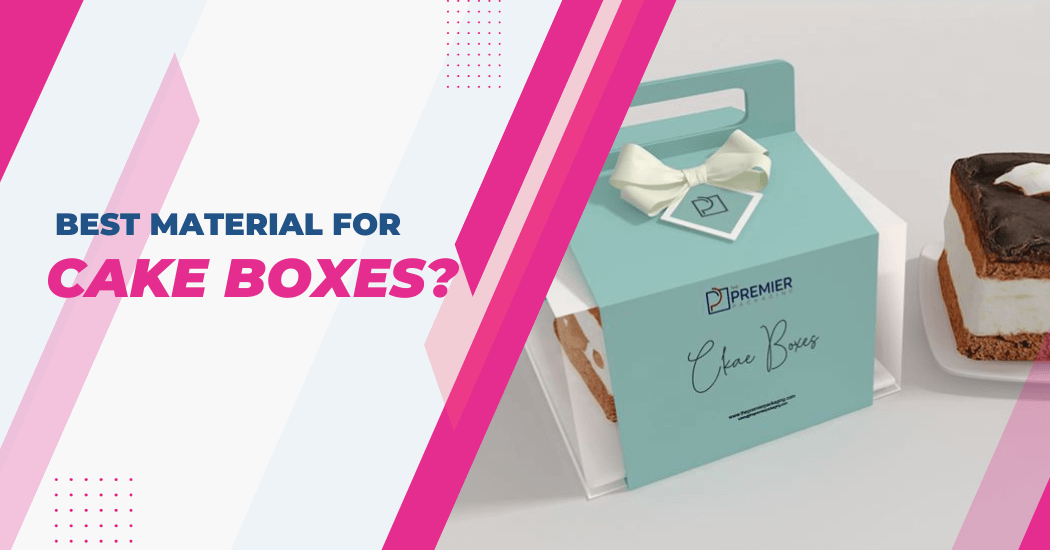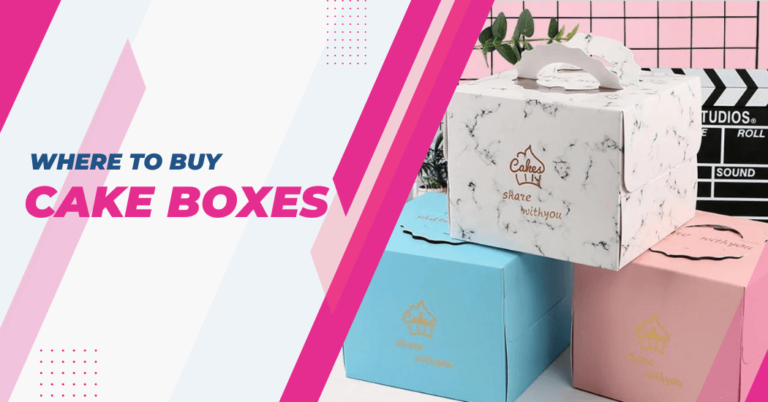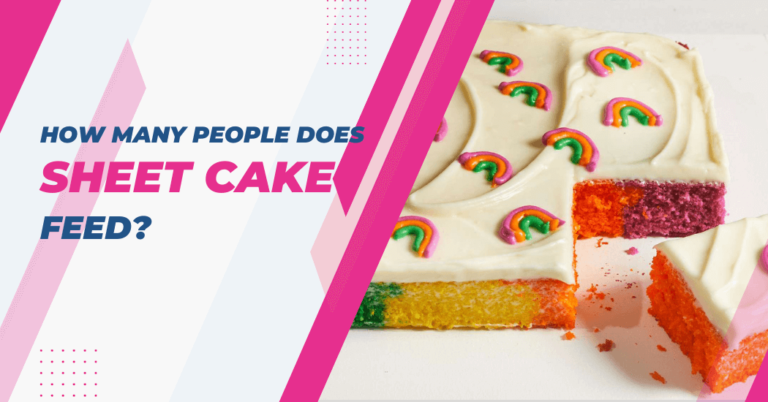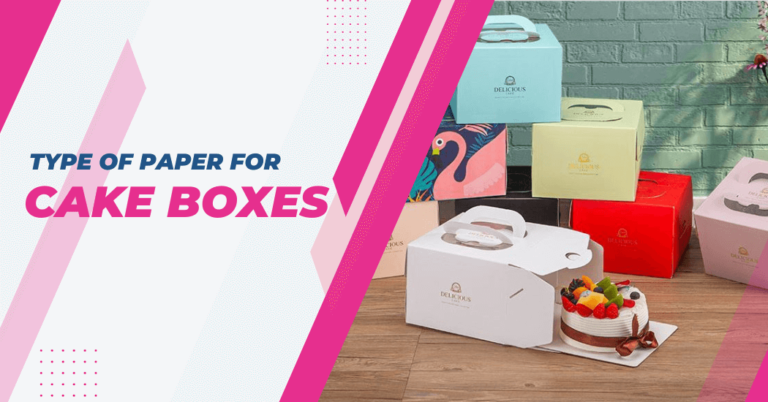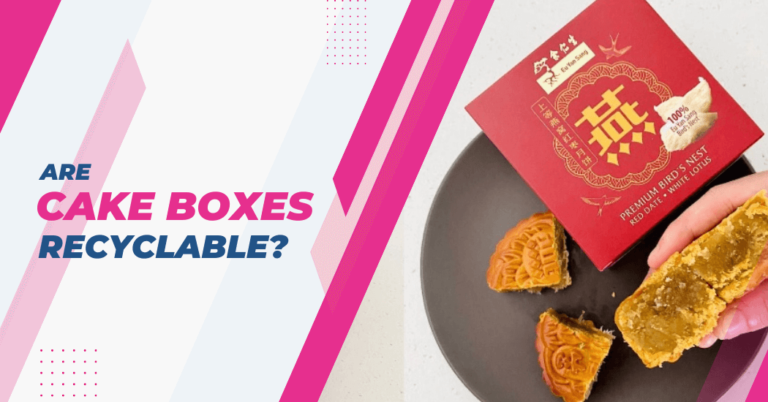What is the material used in the cake box?
Are you wondering what material is used in cake boxes? With a variety of cakes and desserts out there, it’s important to know what materials are best suited for keeping them safe during delivery or transport. Not only does the choice affect the safety of your product but also its presentation!
In this post, we’ll take a look at all the main ingredients that come into play when creating your perfect cake box from cardboard to plastic and even wood!
We’ll explore their pros and cons so you can make an informed decision about which kind will be most effective for packaging your delicious treats.
Material For Custom Cake Boxes
There are various materials used in the production of cake boxes, each with its unique properties and characteristics. Some common materials include cardboard, plastic and wood.
Material that is best for custom cake boxes depends on a variety of factors such as the type of cake or dessert being packaged, the storage conditions and personal preferences.
1) Cardboard
Cardboard is one of the most popular materials used for cake boxes. Made from multiple layers of paper, it is lightweight yet sturdy, making it perfect for transporting cakes and other delicate desserts. It also provides excellent insulation to keep your treats fresh and prevents them from getting crushed or damaged during transport.
However, cardboard is not suitable for packaging moist or greasy cakes as it can easily absorb moisture and oil, causing the box to weaken and potentially compromising the safety of your product. It is also not waterproof, so it may not be the best choice for outdoor events or deliveries in wet weather.
2) Plastic
Plastic cake boxes are another popular option as they offer better protection against moisture and are more durable than cardboard. They also come in various shapes and sizes, making them perfect for cakes of all types and sizes.
Plastic is not environmentally friendly as it takes hundreds of years to decompose. It also does not provide good insulation and can cause condensation, making your cake soggy or moldy if not stored properly.
3) Wood
Wooden cake boxes are often seen as a more high-end and luxurious option. They are sturdy, offer superior insulation and are environmentally friendly. They also give a rustic and elegant touch to your product, making it ideal for special occasions such as weddings or birthdays.
Wooden boxes can be more expensive and heavier than other materials, making them less practical for everyday use. They also require proper care and maintenance to prevent warping or cracking.
Additionally, they are not suitable for packaging moist or greasy cakes as wood is porous and can absorb moisture.
Which material is best for custom cake boxes?
The best material for custom cake boxes ultimately depends on your specific needs and preferences. For example, if you are looking for a cost-effective option that provides good insulation, cardboard may be the way to go.
If you require waterproof packaging or need to transport cakes in wet weather, plastic would be a more suitable choice. And for those looking for an eco-friendly and elegant option, wooden boxes would be the best bet.
It’s important to also consider the type of cake or dessert being packaged. For example, a moist or greasy cake would not fare well in a cardboard box but may do better in plastic or wooden packaging. Similarly, delicate cakes may need extra protection and insulation provided by plastic or wood rather than cardboard.
Ultimately, the material used in the cake box should ensure the safety and freshness of your product while also complementing its presentation. So consider all factors before making a decision on which material is best for your custom cake boxes.
Pros and Cons of Each Material Used in Cake Boxes
| Material | Pros | Cons |
|---|---|---|
| Cardboard | Lightweight and easy to transport. Provides good insulation to keep cakes fresh. Cost-effective option. | Not suitable for moist or greasy cakes, can easily absorb moisture and oil, not waterproof. |
| Plastic | Durable and offers better protection against moisture. Comes in various shapes and sizes | Not environmentally friendly, can cause condensation leading to |
| Wood | Sturdy and provides superior insulation. Environmentally friendly and adds an elegant touch to the packaging. | More expensive and heavier than other materials. Requires proper care and maintenance to prevent warping or cracking. Not suitable for moist or greasy cakes due to its porous nature. |
More expensive and heavier than other materials. Requires proper care and maintenance to prevent warping or cracking. Not suitable for moist or greasy cakes due to its porous nature.
Tips on choosing right material for your cake box
When choosing the right material for your cake box, it’s essential to consider a few key factors.
- Type of cake: Moist or greasy cakes require a material that can withstand moisture without weakening, such as plastic or wood. For drier cakes or pastries, cardboard could be a safe and cost-effective choice.
- Storage and transport conditions: If your cakes need to be transported in varying weather conditions, opt for a waterproof material like plastic. For cakes stored in controlled environments, any material would suffice.
- Environmental impact: If sustainability is a top priority for your brand, consider using cardboard or wood, which are biodegradable materials, unlike plastic.
- Budget: Cardboard is generally the most cost-effective option, while wood tends to be more expensive. Balance your budget constraints with your specific needs to make the best choice.
- Presentation: The material of the box can greatly affect the presentation of your product. For a basic, clean look, go for cardboard. For a more high-end and luxurious touch, consider wood. Plastic is a versatile choice that can suit a variety of cake styles.
Remember, the most important thing is that the material you choose should ensure the safety and freshness of your cakes while enhancing their appeal.
FAQs – Cake Box Materials
Is cardboard a good material for cake boxes?
Yes, cardboard is a cost-effective and lightweight option that provides good insulation, making it ideal for dry cakes and controlled environments. However, it is not suitable for moist cakes and cannot withstand wet weather conditions.
Can all types of cakes be packaged in any material box?
No, moist or greasy cakes may not fare well in cardboard or wooden boxes and may be better suited to plastic packaging. The type of cake should be a key consideration when choosing the box material.
Does the material of the cake box affect the presentation?
Yes, the material of the box can greatly affect the presentation of your product. Cardboard offers a clean look, wood adds a luxurious touch and plastic is versatile for a variety of cake styles.
Can I customize the material of my cake boxes?
Yes, some suppliers offer customization options, allowing you to choose specific materials or add personalized designs to your cake boxes. Keep in mind that customization may affect the cost and lead time.
Wrap Up
The material used in cake boxes plays a crucial role in ensuring the quality, freshness and appeal of the cake. Cardboard, plastic and wood are common materials, each with their pros and cons. Cardboard is cost-effective and provides good insulation for drier cakes, albeit not suitable for moist or greasy ones.
Plastic offers durability and protection against moisture but it’s not environmentally friendly and may risk causing condensation. Wood, though more expensive, offers superior insulation and an elegant touch but requires proper care and is not suitable for moist cakes.
The best material ultimately depends on the type of cake, storage and transport conditions, environmental considerations, budget and desired presentation.
Hence, when choosing the right material for your cake box, all these factors must be carefully considered.
